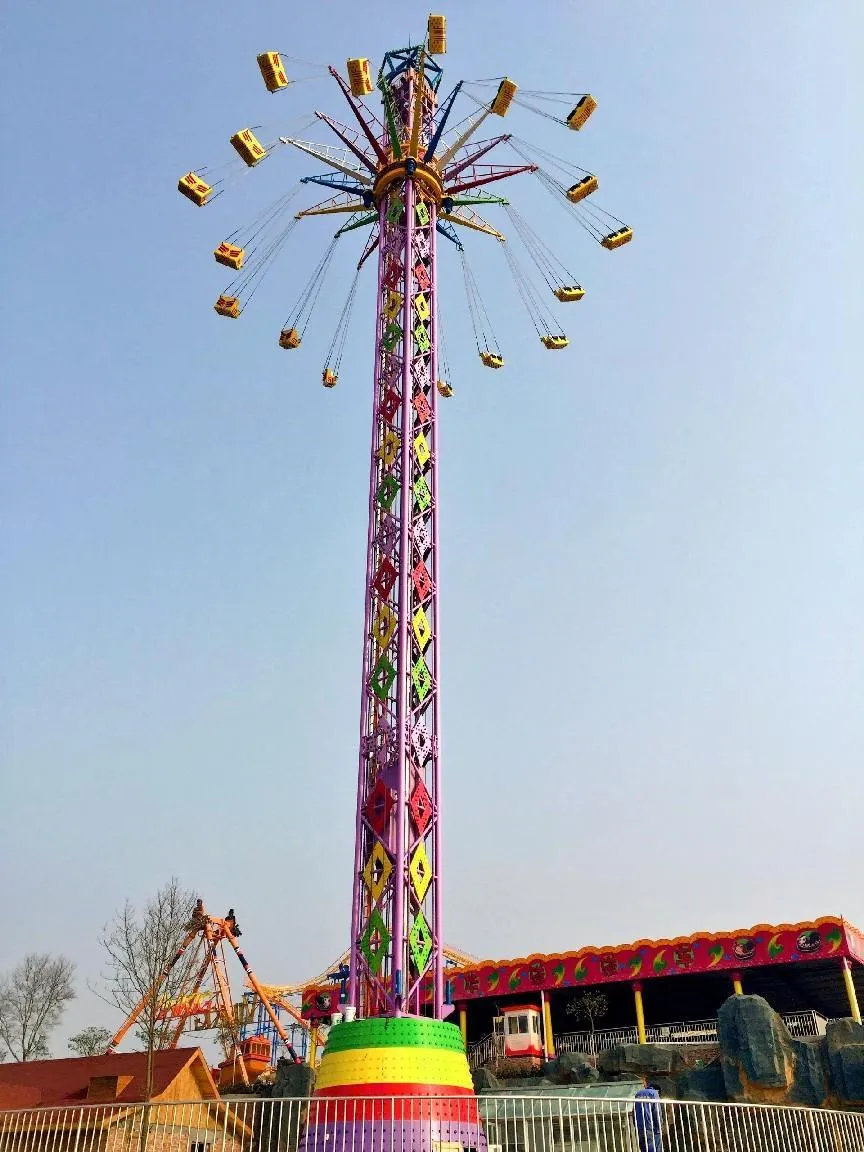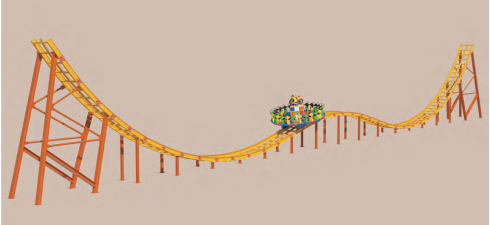1 月 . 20, 2025 16:25
Back to list
89M Steel Cable Ferris Wheel With Arms
Roller coasters are the heart-pounding centerpieces of amusement parks worldwide, captivating thrill-seekers and families alike with their towering heights, breakneck speeds, and hair-raising twists. As the industry continues to innovate, the variety of roller coaster designs expands, each offering unique experiences. Understanding the different types of roller coasters can elevate your appreciation of these engineering marvels and help you choose your next thrilling adventure.
Inverted roller coasters elevate the suspended concept by featuring an overhead track with riders' feet dangling beneath, fully exposed to the open air. This inversion offers a more intense and immersive experience, allowing for spectacular loops and maneuvers that hang riders upside down. Banshee at Kings Island, the world’s longest inverted coaster, is a testament to the thrilling capacity of inverted coasters, with its multiple inversions and impressive speed. Launch roller coasters redefine traditional ascent methods by using advanced technology like linear induction motors or compressed air to propel the train to full speed almost instantly, bypassing the classic lift hill. This instant acceleration provides an intense rush and is often integrated with novel ride elements, such as dramatic inclines and inversions immediately following the launch. Kingda Ka at Six Flags Great Adventure exemplifies this type, holding the record as the tallest and second fastest coaster globally. Dive roller coasters thrill riders with their unique wide-body trains and signature 90-degree drops. Before the plunge, riders experience the suspense of a brief pause, enhancing the dramatic effect of the dive. This type specializes in delivering big-drop adrenaline, often paired with inversions and immersive elements. The Valravn at Cedar Point commands attention as a notable example, intertwining immense drops with intricate loops and spins. Spinning roller coasters offer a unique twist—literally. Their cars rotate freely or in a controlled manner while navigating the track, creating a dynamic ride experience that varies with every run. The unpredictability and varied ride path keep the experience fresh and exciting, catering to families and thrill-seekers alike. Crush's Coaster at Disneyland Paris captures this essence brilliantly, combining spinning fun with captivating theme-based storytelling. Immersing into the diverse world of roller coasters is not just about the adrenaline. It embodies the pinnacle of engineering, creativity, and design prowess. From the classic charm of wooden coasters to the technological feats of steel giants, each type introduces distinct thrills, pushing the boundaries of theme park entertainment. Whether seeking height, speed, or innovative thrill, understanding roller coaster types enriches the amusement park experience, guiding enthusiasts to their next spine-tingling adventure.


Inverted roller coasters elevate the suspended concept by featuring an overhead track with riders' feet dangling beneath, fully exposed to the open air. This inversion offers a more intense and immersive experience, allowing for spectacular loops and maneuvers that hang riders upside down. Banshee at Kings Island, the world’s longest inverted coaster, is a testament to the thrilling capacity of inverted coasters, with its multiple inversions and impressive speed. Launch roller coasters redefine traditional ascent methods by using advanced technology like linear induction motors or compressed air to propel the train to full speed almost instantly, bypassing the classic lift hill. This instant acceleration provides an intense rush and is often integrated with novel ride elements, such as dramatic inclines and inversions immediately following the launch. Kingda Ka at Six Flags Great Adventure exemplifies this type, holding the record as the tallest and second fastest coaster globally. Dive roller coasters thrill riders with their unique wide-body trains and signature 90-degree drops. Before the plunge, riders experience the suspense of a brief pause, enhancing the dramatic effect of the dive. This type specializes in delivering big-drop adrenaline, often paired with inversions and immersive elements. The Valravn at Cedar Point commands attention as a notable example, intertwining immense drops with intricate loops and spins. Spinning roller coasters offer a unique twist—literally. Their cars rotate freely or in a controlled manner while navigating the track, creating a dynamic ride experience that varies with every run. The unpredictability and varied ride path keep the experience fresh and exciting, catering to families and thrill-seekers alike. Crush's Coaster at Disneyland Paris captures this essence brilliantly, combining spinning fun with captivating theme-based storytelling. Immersing into the diverse world of roller coasters is not just about the adrenaline. It embodies the pinnacle of engineering, creativity, and design prowess. From the classic charm of wooden coasters to the technological feats of steel giants, each type introduces distinct thrills, pushing the boundaries of theme park entertainment. Whether seeking height, speed, or innovative thrill, understanding roller coaster types enriches the amusement park experience, guiding enthusiasts to their next spine-tingling adventure.
Latest news
-
Top Amusement Equipment Manufacturer Rock n Roller Coaster & Carousel ManufacturerJun.10,2025
-
World's Scariest Roller Coaster Experience Ultimate Thrill & HeightJun.10,2025
-
Ultimate Thrill Ride Roller Coaster High-Speed, Safe AdventureMay.30,2025
-
Carousel Mansfield Rides Premium Indoor & Event SolutionsMay.30,2025
-
T3 Roller Coaster High-Thrill, Safe Ride for Theme Parks & ResortsMay.30,2025
-
Roller Coaster Cart Design Custom-Built & High-Safety Thrill Ride VehiclesMay.30,2025
